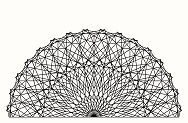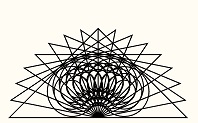


 |
 |
 |
Porphyrins were evolved by cyanobacteria through a billion years or more of evolution before terrestrial life began. Porphyrins are the most spectacular and demanding accomplishment in biology. Yet, biophysicists wrote them off. They contrived a fake method of transferring energy without them. Scientists don't understand the function of the porphyrin ring, because they don't grasp the nature of electrons. If they had been working with electronics, they might have seen what is happening. Porphyrins transfer energy with an efficiency close to 100%. Perhaps it's 95 to 98%. Nothing else in biology or physics transforms energy with anywhere near that efficiency. (I'm told that broadcast inductors might be that efficient, since they transfer energy to electromagnetic waves without much influence over metal atoms which produce heat.) With that degree of efficiency, an energy storage molecule called NADH (Nicotinamide adenine dinucleotide hydrogenated) transfers the energy of one electron into three energized ATP molecules. The electron flows through three porphyrin rings in sequence activating an ATP molecule with each one.
Porphyrin In Cytochrome C Porphyrins are aromatic type ring structures with a metal atom in the center. The quasi aromatic ring contains around twenty double bonding electrons which can flow around the ring. The metal atom can change ionization state absorbing or releasing an electron. This arrangement allows a high energy electron, originating with NADH, to flow into the structure, while an electron in a different energy state flows out. Thereby, an electron of just the right energy state can flow into the energized ATP molecule with no significant loss of energy. The aromatic characteristics of the porphyrin ring creates a cloud of electrons with various amounts of energy. An electron of just the right amount of energy can flow into the ATP molecule. Since the energy of the electron is just the amount that is needed, almost no energy is lost to heat. Different metal atoms are used for different amounts of energy. The first porphyrin to absorb the high energy electron from NADH uses an iron atom in the center. The second energy state apparently uses copper though it might sometimes again use iron. Apparently, the third energy state uses cobalt; but this sequence is not always the same. This process applies to the respiratory chain system. It's not where porphyrins began. They began in creating photosynthesis. The ring structure for photosynthesis is called chlorin, not porphyrin. Photosynthesis evolved in the cyanobacteria more than a billion years before terrestrial life and vascular plants evolved. Photosynthesis requires the porphyrin/chlorin ring for transforming the energy of light waves into the chemical energy of electrons. After the porphyrin/chlorin ring existed for light activation of chemical energy, it could be transformed into the cytochrome system for respiration. When and how respiration evolved with the cytochrome rings is not clear. This evolution did not have to follow the parent to offspring line of descent, as all evolution was assumed to do, until horizontal gene transfer was discovered during the 1990s. The genes are carried across species through viruses, fungi and bacteria. The chlorin for photosynthesis is said to contain magnesium. There are two peaks of light absorption with photosynthesis. Two peaks indicate that two different metal atoms should be found in the chlorin rings. Presumably, the other atom is iron. Why haven't the plant physiologists noticed the iron? Maybe they are as absorbed into fraud as the biophysicists studying respiration. Plant physiologists have found that plants require a lot of iron in their growing media. They use ten to twenty times as much iron in their media as microbiologists use. And they cannot explain why so much iron is needed. The most logical explanation of why plants require so much iron is that there are two metal atoms in the chlorins for the two absorption peaks. One of the absorption peaks for photosynthesis is in the area of blue light and one in the area of red light. Logic indicates that a magnesium chlorin absorbs the blue light, while iron chlorin absorbs the red light. The reason for two chlorin absorption peaks for photosynthesis is probably due to variations in light intensity. The blue light would transfer energy more rapidly than the red light. So absorption in the blue area would be used when more energy intensity is needed, and red when energy intensity needs to be reduced.
|
|
|||||||||||||||||
 |
 |
 | ||
 |
 |
 |
||